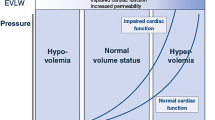Abstract
Objective.Doppler corrected flow time (i.e., corrected leftventricular ejection time) as a noninvasive tool for assessing hemodynamicchanges has been previously reported for adult patients. Its use inpaediatrics seems to be worthwhile but no data concerning its accuracy arepresently available in this population. The purpose of this work was to studythe relationships between corrected flow time (FT) and indices of systemicvascular resistance (SVR) and of myocardial contractility in healthy children.Methods.Twenty healthy children performed a graded maximal bicycleexercise in order to induce physiological hemodynamic alterations. Hemodynamicparameters were measured with an echocardiography-Doppler at rest and withina few minutes of post exercise. Cycle time (RR), mean aortic flow velocity,mean systolic velocity (MSV), FT, peak velocity (PV), and stroke distance weremeasured on the Doppler aortic velocity waveform. Cardiac index (CI) and SVRwere calculated from the classical volumetric equation. Corrected FT wascalculated by using Bazett's formula (FTb =FT/√) and a simplified formula FTc =FTmeasured + [1.29 ċ (HR −60)]. Results.Post exercise, SVR, RR, FT, decreased, while CI,PV and MSV increased and stroke distance remained unchanged. After multipleregression analysis no significant correlation between SVR and FTband SVR or FTc was noted. A significant correlation appearedbetween FTb and, respectively, PV (r= −0.83; p< 0.001), stroke distance (r= 0.78; p< 0.001)and RR (r= −0.52; p = 0.0016). A significantcorrelation was also shown between FTc and, respectively, PV(r = −0.71; p < 0.001) and stroke distance(r = 0.63; p < 0.001) but not with RR. Conclusions.These results show that the use of Bazett's formula correct FT couldlead to hemodynamic misinterpretations, because it does not rule out all theheart rate effect. Moreover, in healthy children corrected FT appears as aninaccurate index to monitor physiological afterload alterations, because ofthe involvment of other hemodynamic factors such as contractility in itsvariation.
Similar content being viewed by others
REFERENCES
Singer M, Clarke J, Bennett ED. Continuous hemo-dynamic monitoring by esophageal Doppler. Crit Care Med 1989; 17: 447-452
Singer M, Allen MJ, Webb AR, Bennett ED. Effects of alterations in left ventricular filling, contractility, and systemic vascular resistance on the ascending aortic blood velocity waveform of normal subjects. Crit Care Med 1991; 19: 1138-1145
Singer M, Bennett ED. Noninvasive optimization of left ventricular filling using esophageal Doppler. Crit Care Med 1991; 19: 1132-1137
Bazett HC. An analysis of the time-relations of electro-cardiograms. Heart 1920; 7: 353-370
Gardin JM, Dabestani A, Matin K, Allfie A, Russell D, Henry WL. Reproducibility of Doppler aortic blood flow measurements: Studies on intraobserver, inter-observer and day to day variability in normal subjects. AmJ Cardiol 1984; 54: 1092-1098
Hanseus K, BjØrkhem G, LundstrØm NR. Cardiac func tion in healthy infants and children: Doppler echocardio graphic evaluation. Pediatr Cardiol 1994; 15: 211-218
Funck-Brentano C, Jaillon P. Rate-corrected QT interval: Techniques and limitations. Am J Cardiol 1993; 72: 17B-22B
Puddu PE, Jouve R, Mariotti S, Giampaoli S, Lanti M, Reale A, Menotti A. Evaluation of 10 QT prediction formulas in 881middle aged men from the seven countries study: Emphasis on the cubic root fridericia's equation. J Electrocardiol 1988; 21: 219-229
Haycock GB, Chir B, Schwartz GJ, Wisotsky DH. Geometric method for measuring body surface area: A height-weight formula validated in infants, children and adults. J Pediatr 1978; 93: 62-66
Spietaels S, Arbogast R, Fouron JC, Davignon A. The influence of heart rate and age on the systolic and diastolic time intervals in children. Circulation 1974; 49: 1107-1115
Kovacs SJ. The duration of the QT interval as a function of heart rate: A derivation based on physical principles and a comparison to measured values. Am Heart J 1985; 110: 872-878
Harris LC, Weissler AM, Manske AO, Danford BH, White GD, Hammill WA. Duration of the phase of mechanical systole in infants and children. Am J Cardiol 1964; 14: 448-455
Golde D, Burstin L. Systolic phases of the cardiac cycle in children. Circulation 1970; 42: 1029-1036
Weissler AM, Harris WS, Schoenfeld CD. Systolic time intervals in heart failure in man. Circulation 1968; 37: 149-159
Saltin B. Hemodynamic adaptations to exercise. Am J Cardiol 1985; 55: 42D-47D
Elkayam U, Gardin JM, Berkley R, Hughes GA, Henry WL. The use of Doppler flow velocity measurement to assess the hemodynamic response to vasodilators in pa tients with heart failure. Circulation 1983; 67: 377-383
Bennett ED, Barclay SA, Davis AL, Mannering D, Mehta N. Ascending aortic blood velocity and acceleration using Doppler ultrasound in the assessment of left ventricular function. Cardiovasc Res 1984; 18: 632-638
Bedotto JB, Eichhorn EJ, Grayburn PA. Effects of left ventricular preload and afterload on ascending aortic blood velocity and acceleration in coronary artery disease. AmJ Cardiol 1989; 64: 856-859
Author information
Authors and Affiliations
Rights and permissions
About this article
Cite this article
Wodey, E., Carre, F., Beneux, X. et al. Limits of Corrected Flow Time to Monitor Hemodynamic Status in Children. J Clin Monit Comput 16, 223–228 (2000). https://doi.org/10.1023/A:1009981024804
Issue Date:
DOI: https://doi.org/10.1023/A:1009981024804




